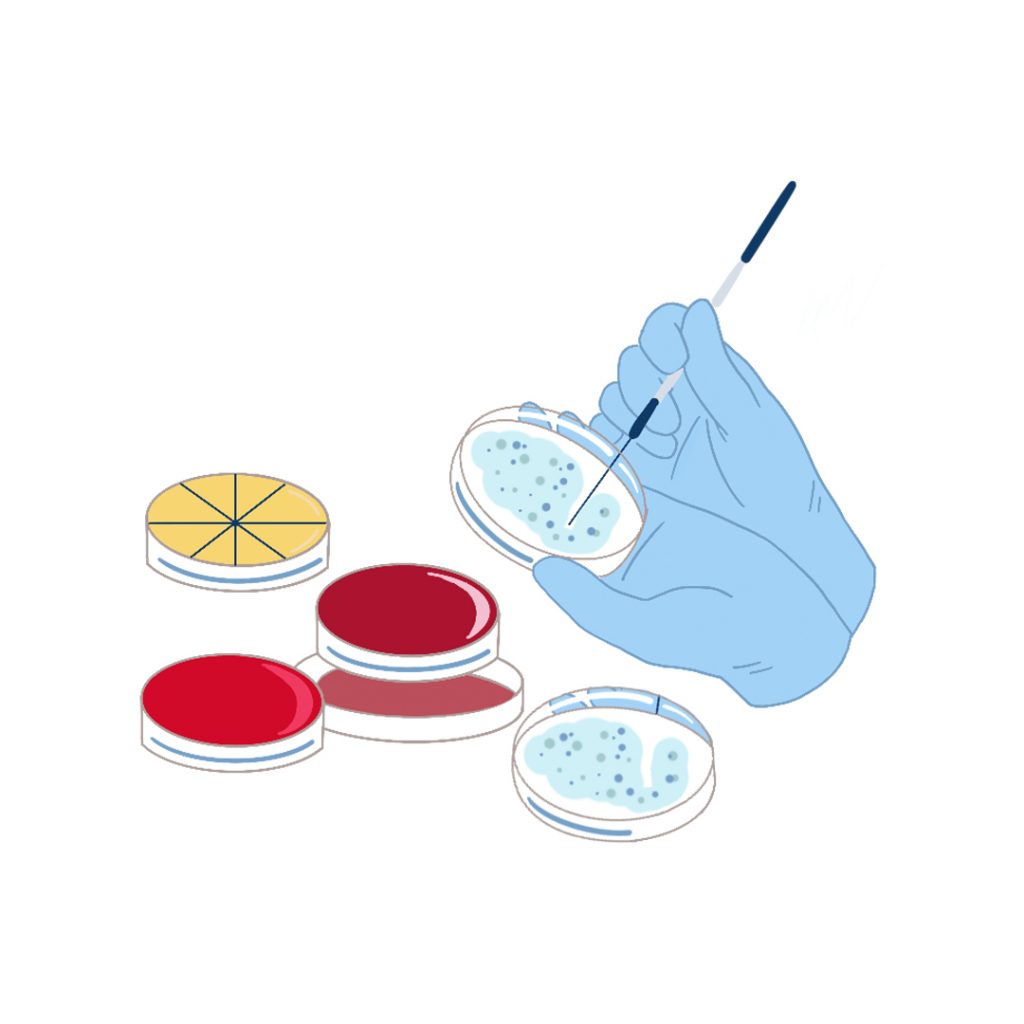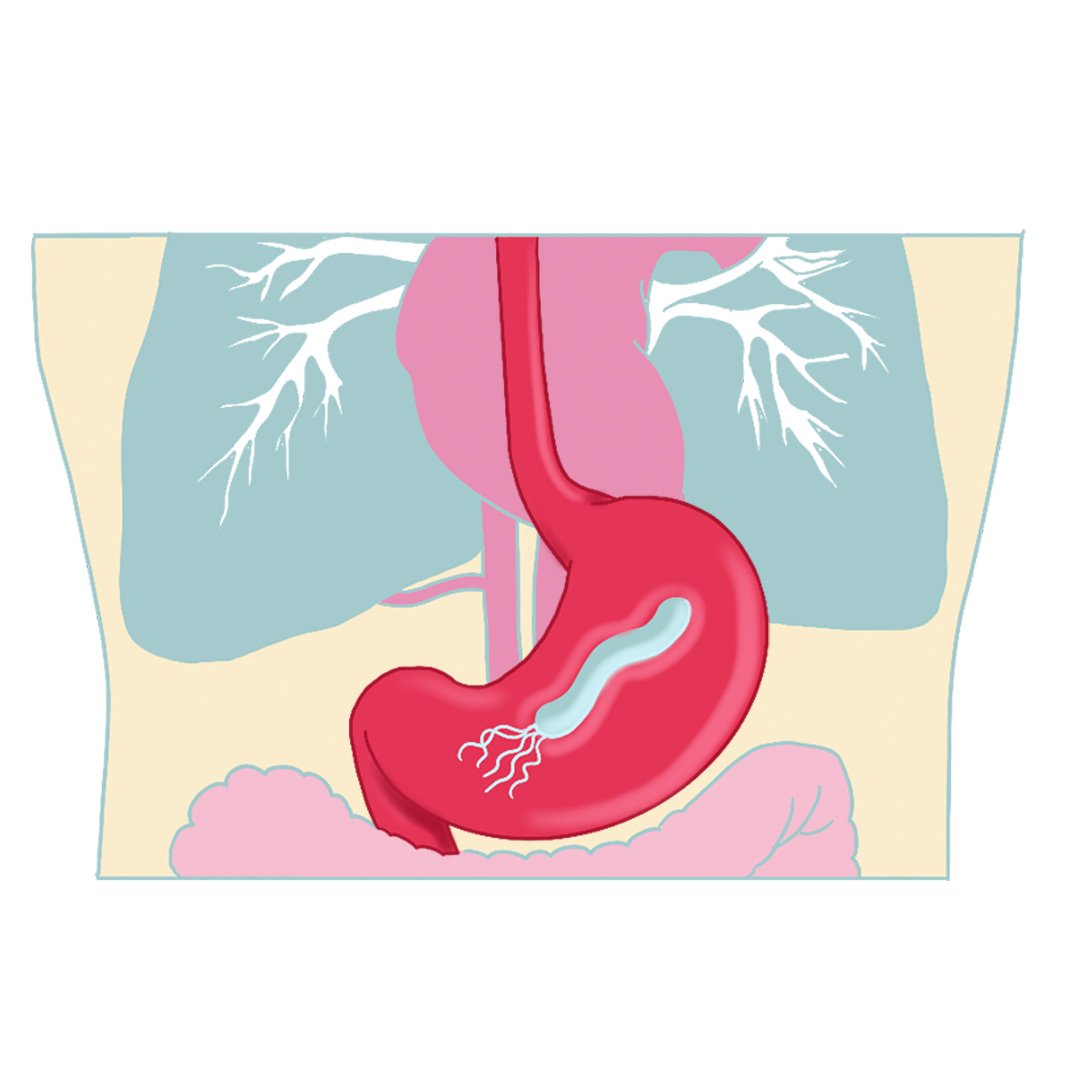Microbiology
¿What is studied in the area of microbiology?
All biological samples from patients such as urine, blood, fecal matter, sputum, bone, tissues, hair, skin scales, joint fluid, purulent material, among others, are studied in order to search in them, directly or indirectly, for microorganisms causing infection (bacteria, fungi, parasites, mycobacteria and viruses).
¿What are Microbiology tests sent for?
- To rule out or confirm the presence of microorganisms in the patient’s sample, to determine if the microorganisms present in the sample have significance or importance in the infectious process that afflicts the patient and to define if antimicrobial treatment should be initiated or if the one already prescribed to the patient should be adjusted.
- To determine if the infection that afflicts a community or group of people is the same and if it can be considered an outbreak of infection, as well as to define measures to help contain the situation so that no more people are infected.
- To follow up prolonged infectious processes for which the patient has been receiving antimicrobial treatment and to define if the therapeutic response is satisfactory, if it should be continued, modified or suspended.
- In patients who are going to undergo certain surgical procedures or who are going to be hospitalized in common rooms; to know if the microbial population of a certain organ or system is susceptible or resistant to a certain antibiotic or group of antibiotics and, thus, to define which drug should be used in case of infection in the next few days or which drug should be used prophylactically before the procedure.
¿What types of samples are processed in the area?
Practically all clinical samples from patients are studied: urine, blood, fecal matter, sputum, bone, tissue, hair, skin scales, joint fluid, pus, skin, among others. The important thing is that these samples meet certain requirements that guarantee that the microorganisms are still alive and “visible” in them. This information can be consulted in our portfolio of tests.

¿Why is it important to know the sensitivity of a microorganism to antibiotics?
For several reasons:
- In general, antibiotics are useful for fighting bacteria. Therefore, they should not be used to treat infections caused by viruses, fungi or parasites. To treat infections caused by viruses we should use drugs that target them, the antivirals; just as we should use antifungals to treat infections caused by fungi and antiparasitics for those caused by parasites. This caveat is made because, in general, what we call antibiotics, and what we are given in pharmacies under this name, are useful drugs to treat bacterial infections.
- There are different groups of antibiotics and bacteria. Some antibiotics, for example, are useful for a group of bacteria known as Gram-positive, others are directed at the Gram-negative group; others, which are known as broad-spectrum, have action for both groups and, therefore, the ideal is to administer them only when strictly necessary, so that they do not alter the microbiota of the individual receiving the treatment.
- It is also important to keep in mind that most bacteria have natural resistance to some antibiotics, i.e. they are “born with them”. Thus, when they cause an infection and these antibiotics are used in the treatment, the bacteria will survive and therapeutic success will not be obtained.
- Another reason is that microorganisms, due to the exposure that the person has had to antibiotics in previous treatments, through food, water, among others, acquire the ability to resist some antibiotics, so that these are no longer useful to treat them effectively when they cause infection.
¿What is the study of mycosis and how is it performed?
The word mycosis refers to the infection caused by fungi somewhere in the organism. It could be said, then, that the study of mycoses is the study of infections caused by fungi and, in the specific case of the clinical laboratory, it deals with the study of clinical samples in order to look for the presence of fungi that are considered pathogenic, identify them and determine in them characteristics such as susceptibility to antifungals.
The study of fungal infections in the clinical microbiology laboratory uses processes similar to those used to study infections caused by bacteria. Among those already mentioned are tests aimed at finding antibodies, microscopy, culture and the antifungigram, which, like the antibiogram, aims to determine the susceptibility of the fungus causing the infection to the drugs used for its treatment. In addition, molecular biology tests can identify it and describe some of its other characteristics more quickly than cultures.
However, it should be taken into account that, in general, the study of fungi takes more time than that of bacteria because these microorganisms grow more slowly in cultures and need other nutrients and conditions of humidity and temperature to express themselves.
¿What is Helicobacter pylori, and what is the advantage of culture?
Helicobacter pylori is a bacterium that has been present in the digestive tract in more than half of the people since childhood. Most individuals carry the organism, but do not develop disease. Only 10% to 20% of those infected develop gastrointestinal symptoms as a consequence of gastritis, peptic ulcer or gastric cancer.
Diagnosis of infection can be made with breath tests, urease, measurement of antibodies in blood, antigen search or culture in fecal matter and anatomopathological study in gastric or duodenal biopsy. However, the gold standard test is the culture of the microorganism from a gastric or duodenal biopsy taken by upper endoscopy.
The purpose and advantages of biopsy culture are to isolate the microorganism, identify it and perform tests to define its sensitivity or resistance to antibiotics used in the treatment of symptomatic infection, ensure its elimination and prevent complications.




